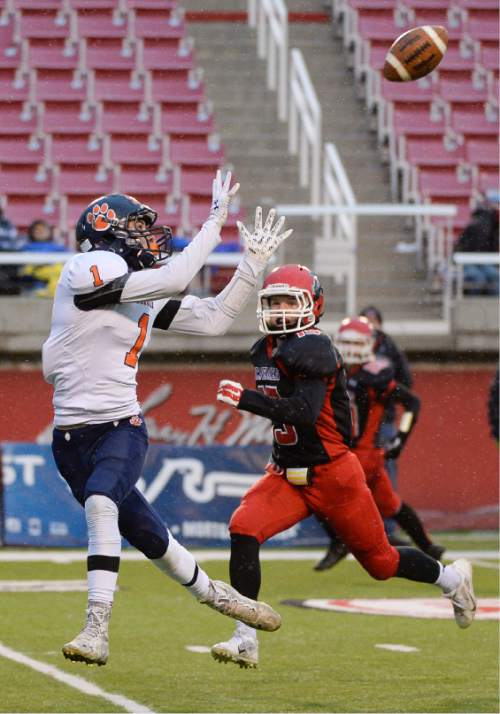This is an archived article that was published on sltrib.com in 2015, and information in the article may be outdated. It is provided only for personal research purposes and may not be reprinted.
Eventually, Urban Meyer becomes the answer to almost every question.
The former University of Utah coach has influenced high school football offensive schemes in the state, and he returned to the Salt Lake Valley this past winter to recruit Corner Canyon offensive lineman Branden Brown to Ohio State. Of course, other factors beyond Meyer's spread offense have driven the remarkable rise of Utah prep football in recent years, and he's hardly the only coach who has discovered the increasing talent level here.
If I could change a couple of things about high school football, whether magically or legislatively, fewer players would transfer and dynasties would not exist — not that those two elements are related, necessarily. Then again, the likes of Bingham and Timpview have created high standards for opponents to chase. And the entertainment value on Friday nights is greater than ever because of the level of talent and competition.
Utah coach Kyle Whittingham is entering his 22nd season on the staff. During his time as an in-state recruiter, the number of college prospects has "definitely grown exponentially," Whittingham said.
The players are getting much better and, not surprisingly, so are the teams. Among other strong showings in interstate games, Bingham's overtime contests with two of the country's top-ranked teams from Las Vegas and Miami last year illustrated that Utah's best programs can compete with just about anyone, anywhere.
Thanks to a convergence of good coaching, improved training techniques and the growth of Utah's Polynesian community, in which football is culturally important, Utah high school players have become highly marketable. They're also easier to find, because of social media and other recruiting advancements. Mix in the Utes' Pac-12 membership, and the landscape has changed considerably. Partly because the state is in the conference's footprint, big-time recruiters keep coming.
"The more they're in our territory, the more they're finding out these are tough kids that love the game of football and are coached well," said Utah assistant coach Morgan Scalley. "You've got to fight to keep 'em home."
Utah products signed with the likes of Ohio State, USC, UCLA, Michigan State and Stanford in February. Brighton receiver Simi Fehoko, the state's top prospect in the class of 2016, has committed to Stanford.
The phenomenon is stunning to longtime coaches, including Ryan Bullett of Brighton and Dave Peck, formerly of Bingham. They remember when having FCS schools Weber State and Southern Utah sign their players was "a pretty big deal," Peck said.
It is different now. Including athletes on LDS Church missions, Peck recently counted 32 former Bingham players in the five FBS or FCS programs in the state. Bullett marveled last spring when coaches from roughly 40 colleges visited his school. "It's crazy," he said.
Whittingham points to better high school coaching as a driving force, preparing players for the college level. Peck endorses that theory, having worked with coaches from other states in national all-star games.
Bullett cites Meyer's influence, as much as anything, after Meyer led Utah to a 12-0 record in 2004 and then moved to Florida (and Ohio State). Connect these dots: The spread offense soon took hold in high schools. In turn, defenses adjusted by getting faster players onto the field — and college coaches are always looking for speed.
That theory makes sense as a contributing factor. And the national reputation that Peck built at Bingham also has brought more recruiters to Utah.
Last February's exodus will make next February's national signing date even more intriguing, to see whether more players besides Fehoko continue the trend of 2015. I know this: He's among a bunch of Utahns who will be fun to watch between now and then.
Twitter: @tribkurt





